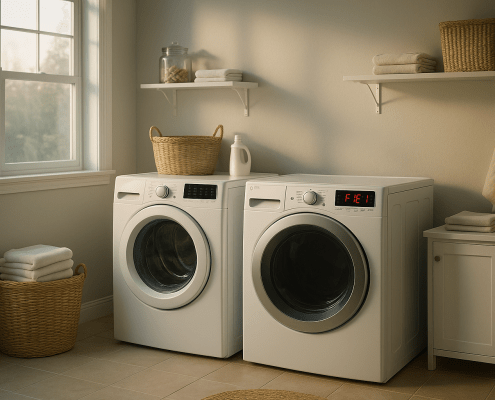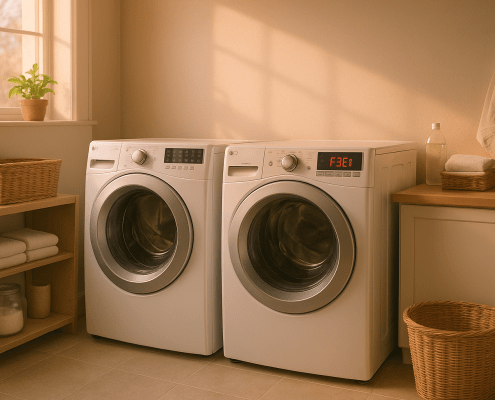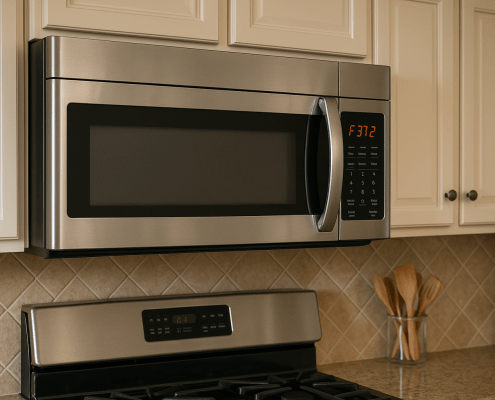How to troubleshoot error code IE on an LG dishwasher
Steven E / Monday April 28, 2025
Is your LG dishwasher displaying error code IE? Don’t worry, this is a problem that you can fix yourself without the need for a costly service call and we’re here to help you do it!
If you find out that you need any replacement parts for your appliance while you’re troubleshooting, you can enter your model number at AppliancePartsPros.com to order them. Most orders arrive in just two business days, and we have thousands of free guides to show you how to install your new parts.
The error code information provided in this article may not apply to your specific appliance model. The disassembly information is based on models starting with LDF6920. We recommend consulting your manufacturer’s documentation or contact us with any questions.
What the error code means
The error code “IE” on an LG dishwasher indicates an issue with the water inlet or water supply to the dishwasher.
Safety precautions
When working on any appliance, remember to keep safety first. Here are some tips to keep in mind:
- Always power off and unplug your appliance or switch off the circuit breaker before attempting any maintenance or replacement work. This keeps you safe by preventing any risk of injury from electric shock.
- Wear insulated work gloves to protect your hands from sharp metal parts, pinching hazards and debris.
- Take your time and don’t rush while working to prevent accidents and personal injuries.
- Work in a well-lit area so you can clearly see and access the interior parts.
- Clear your workspace of clutter and other obstacles. Keep children and pets away from the work area.
- Never work on internal parts with bare wet hands. Make sure the work area is completely dry.
- Check your user manual to see if there are specific installation or safety instructions for your part or appliance.
- Be gentle when handling or removing parts. Excessive force might damage the appliance or cause injury.
- Wear safety glasses when working with chemicals, dust or cleaning large debris to prevent injury.
- If the appliance has recently been used, give it plenty of time for any heating parts to cool down before working on it.
- Take pictures or make a note of wiring terminals or other connections before disconnecting to prevent any problems with reassembly.
- When working with wires, avoid touching any exposed wires or terminals. If you need to touch a wire, use a non-conductive tool or wear insulating gloves to prevent electrical shock.
- Turn off the water supply at the outlet before beginning repairs to any appliance parts that hold water. Have towels ready for any residual water in the system when removing parts.
Troubleshooting steps
Check the incoming water supply
- Ensure the water supply line to the dishwasher is turned on and there is water flowing.
- Check that the water supply valve is fully open.
- Inspect the water supply line for any kinks, clogs, or damage that may be restricting the water flow.
Inspect the fill hose
- Visually inspect the fill hose for any blockages, freezing, or damage.
- Gently feel along the length of the hose to check for any restrictions or obstructions.
- If the hose appears to be blocked or frozen, try to clear the blockage or allow the hose to thaw.
- Replace the fill hose if it is significantly damaged.
Check the inlet valve screen
- Disconnect the water supply line from the inlet valve.
- Use a small brush or toothpick to carefully remove any debris or blockages from the inlet valve screen.
Test the water inlet valve
LIVE VOLTAGE WARNING: For this test, the appliance needs to be plugged in and powered on. Please be very careful to protect yourself from electric shock, which has the potential to cause serious injuries. Don’t ever test live voltage if you’re uncomfortable using a multimeter.
- Disconnect the wiring connector from the water inlet valve.
- Use a multimeter to test the resistance of the inlet valve.
- Normal resistance should be between 950-1300 ohms.
- A reading of 0 ohms or infinite resistance indicates a faulty valve.
- Also, test for the presence of 120V AC at the inlet valve connector when the dishwasher is powered on and attempting to fill.
- If there is no voltage present, the issue may be with the wiring or control board.
- Replace the water inlet valve if it is found to be faulty.
- Inspect the wiring connector at the water inlet valve to ensure it is securely connected.
- Trace the wiring back to the control board and check for any loose or damaged connections.
- Repair or replace any faulty wiring or connectors as needed.
Additional information
Thank you for reading! We hope this guide helped you get your LG dishwasher working again.
If you have any other appliance repair needs or projects, don’t hesitate to explore our other troubleshooting guides and videos.
If you need replacement parts or some extra help with ordering them, grab your model number and head over to AppliancePartsPros.com, where you can chat with a pro, read our DIY blog and more.
Be sure to subscribe to us on YouTube and follow us on Facebook, Twitter and Instagram!
With nearly a decade of experience in providing top-notch customer service regarding appliance parts and repair, Steven enjoys sharing practical advice, troubleshooting tips, and interesting information to help readers stay informed.





